#hudsonian
Text

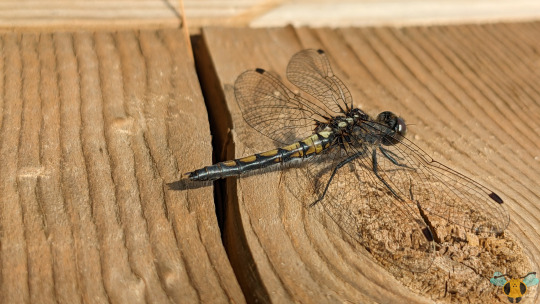


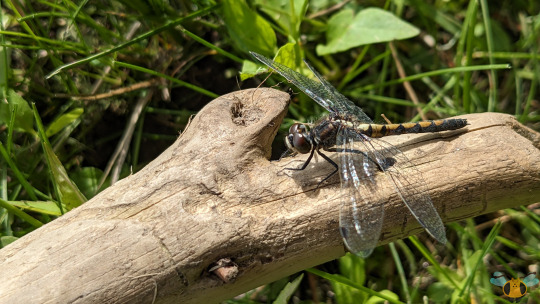


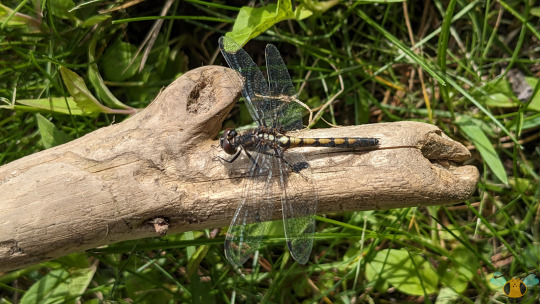


Hudsonian Whiteface - Leucorrhinia hudsonica
I always enjoy visits to the lakes and cottage country of Muskoka, not just for the peace and views, but also for all the aquatic-based insects that fly around, day or night. Today's specimen is a day flier and she's somewhat small by my estimations. I mean, you can see for yourself as she perches on my thumb. Although this sky hunter is quick, I was able to form a loose grip around her with both hands in order to catch her for a closer look. For any aspiring bug hunters that will attempt to try this in their journeys, do keep in mind that Dragonflies can be very swift and agile, so catching them may be tricky. They must also be handled gently so as to not damage their wings or abdomen. Furthermore, try not to agitate or trap them in a small area as they can (and likely will) bite in defense...as I found out. Her bite was more than a sharp pinch, but not too painful. Such a bite has to be designed with strength and efficiency given how specialized Dragonflies are in snatching aerial prey midflight and then subsequently shredding them to food! So yes, serrated mandibles are a great asset for offense and defense, and this was a small Skimmer's bite. A larger Darner Dragonfly would likely have more powerful slicing and crunching mandibles! Formidable as their bite force could be, I'd rather be bitten by 100 Dragonflies in cottage country than contend with a single hungry mother Horsefly!
It's most fortunate that these hunters can be an effective biological control against Dipteran populations, including Mosquitoes which can really swarm lakes! All she (this individual) needs to do is swoop in and fly to her heart's content, seizing prey as she goes. As for some more concrete information on this specie: as a member of the genus Leucorrhinia, it has a white-colored face from the frons to the labrum. In addition to the lack of claspers, the pattern along her body is indicative that this is a female specimen; mature males feature bold red markings along the spine and wing-bases. However, immature males are incredibly similar in appearance to females (their red deepens with age) so look closely for the abdominal claspers. Finally, the females of this specie are very similar in pattern and appearance to Dot-Tailed Whiteface (L. intacta) females which also call Canada home. I settled on the Hudsonian Whiteface as an identification after closely examining the wings, and comparing against Dot-Tailed pictures. The Dot-Tailed individuals that I've seen have minimal side-patterning at the thorax-abdomen region and their yellow spinal pattern appears a thin streak rather than variable shapes arranged in sequence. Both species have overlaps in their habitat range, so it never hurts to be as thorough as possible.
Pictures were taken on May 26, 2024 in Muskoka with a Google Pixel 4. What a wonderful day! This specie also shares some physical appearance similarities to the Belted Whiteface (L. proxima - both the females and males), but that specie seems easier to distinguish. At least when considering North American species.
#jonny’s insect catalogue#ontario insect#dragonfly#hudsonian whiteface#skimmer dragonfly#odonata#insect#muskoka#may2024#2024#nature#entomology#invertebrates#arthropods#what a wonderful day
16 notes
·
View notes
Text

A hudsonian godwit feeding at high tide
May 2, 2023
96 notes
·
View notes
Note
Well, now I need to know your favourite animal~!
HUDSONIAN WHIMBREL HUDSONIAN WHIMBREL HUDSONIAN WHIMBREL!!!

[By Félix Uribe, CC BY-SA 2.0, https://commons.wikimedia.org]
look at it. the eyeliner, the feathers 🥺🥺🥺 they've split off from european whimbrels fairly recently!! i did a project on them in college and i adore them so
7 notes
·
View notes
Text
If you're ever looking for creative insults to sling at your enemies, download a bird identification app.
You've got your classics:


But then they get weirder:

And I don't know what any of these would mean exactly, but damn wouldn't they just bruise your ego a little?:


"How dare you, you glaucous gull! You hudsonian godwit! You absolute dickcissel!"
#tag yourself#I'm the lesser flamingo#bird identification#birds#birdwatching#mine#lol#dank memes#funny#humor
10 notes
·
View notes
Text
Your Bird Quiz Submission
The submission MUST include:
Photo - Please choose the clearest image you have
Location - State/Provence at minimum.
The proper species name
Season or date of when the photo was taken
Any additional wrong answers are not required, but welcomed. Be sure to specify the correct answer if you do.
General Rules
Original content only
No human interaction or contact of any kind
Birding content only
Submitters are expected to practice the American Birding Association (ABA) Code of Birding Ethics along with State or Provence laws
No captive bird submissions
If multiple birds in the shot, it must be obvious what bird is the quizzed bird
Any submission that does not follow the guidelines will not be posted.
Example
Location: Indianapolis, IN. Fall

Answer:
Hudsonian Godwit
Additional Answers:
Eastern Screech Owl
Great Horned
Mandarin Duck
Snowy Egret
For Bird ID submission guide, click [here]
8 notes
·
View notes
Text
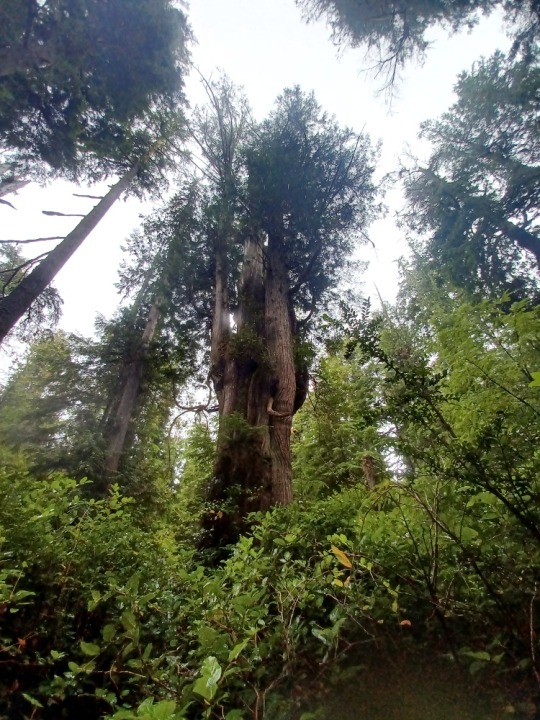

My apologies for the radio silence, folks! The past couple of weekends have been super busy--but with a lot of great stuff!
Weekend before last was Wings Over Willapa, the birding and nature festival that happens on and around Willapa NWR in the very southwest corner of Washington. It's one of my favorite events throughout the year, and I have been involved from the very beginning back in 2018. This year I actually got to be a tourist in addition to a tour guide, getting to explore the old growth cedar forest at Ellsworth Canyon with a Nature Conservancy employee. it was incredible getting extra perspective on this special place. I also got to guide tours through even more old growth cedar at Long Island on Saturday, someplace that I never, ever, ever get tired of. I love how the thousand-plus year old cedars have crowns on the top, since the storm winds often shear off the trees' leaders, so another must then sprout. It gives them more personality.
Right after that I hustled on over to Loomis Lake State Park to lead my beach tour. We explored the dunes, and I showed the participants how to tell the difference between the native Leymus mollis dune grass, and the invasive Ammophila grasses that have taken over that habitat. We found some neat things while beachcombing, like marine snail egg casings, and had some great wildlife sightings, like lines of brown pelicans coasting over the waves, and a lone Hudsonian whimbrel picking its way along the beach in search of food.
That evening we were treated to the keynote speech by author and conservationist Paul Bannick, who spoke on how woodpeckers and owls are very often keystone species in their habitats. I had just enough time that night to get some sleep before peeling myself out of bed for an 8am tour that I led around the Art Trail and Cutthroat Climb at the old Refuge headquarters. I am in love with that place, and I am overjoyed the trails are open to the public after extensive improvements were made earlier this year.
This past weekend was just as much fun! I have been very excited to see the development of Snow Peak's new campfield in Long Beach. For those who aren't aware, Snow Peak is a quality outdoor supply company based in Japan, analogous to REI or Patagonia. Each of their flagship stores has a campfield within a couple of hours which has camping and events. The Long Beach location is associated with the Snow Peak store in Portland, and is just about ready for a soft opening!
I have been hoping to get in touch with folks there since I really, really want to see more ecotourism out in the Long Beach and Willapa Bay area. We're so lucky to have so much beautiful nature out here, and I want to see more people getting to enjoy it. I was thrilled when a representative contacted me some weeks back inviting me to teach a couple of mushroom foraging classes during this year's Snow Peak Way, an annual camping event that draws hundreds of people and which was held this year over on the east side of the Cascades in Tygh Valley.
To say that I had a great time would be an immense understatement. I have been to a lot of festivals, conventions, and other events over the years, and this had all the things that I love about these events, without the things I find obnoxious. I made a lot of friends and connections, was fed VERY good food, and if my experience with borrowed gear is any indication, Snow Peak is well worth the hype. I am very much hoping to get to partner more with these folks once the campfield is open and running.
There's no time for downtime right now, though. I'm back in Portland later this week for several classes, and I have less than three weeks before I'm on the road to Missouri again for my fall visit. In between now and then I have several writing projects due, including the first deliverables for The Everyday Naturalist, plus various other tasks around the home and farm. Things will slow down once we get closer to the holidays, but for now it's all go, all the time!
#camping#forests#Wings Over Willapa#Willapa National Wildlife Refuge#Washington#Oregon#Snow Peak#Snow Peak Way#old growth forest
8 notes
·
View notes
Text

Limosa haemastica Hudsonian Godwit / Becasa de mar
2 notes
·
View notes
Text


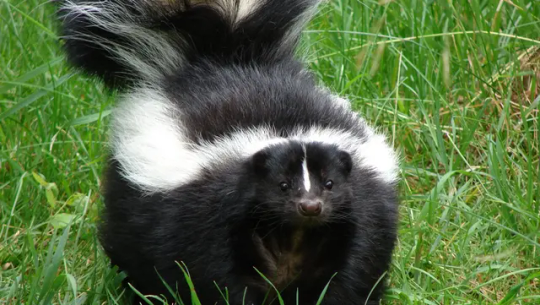

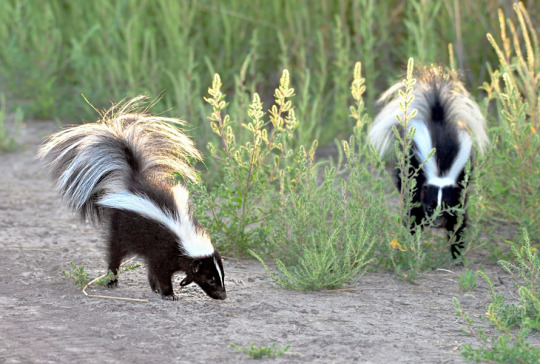
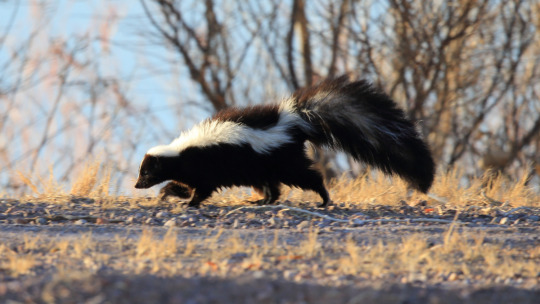



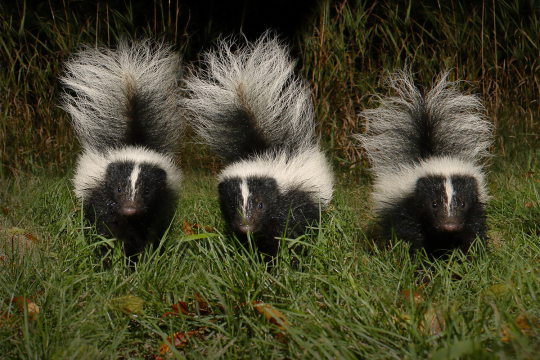

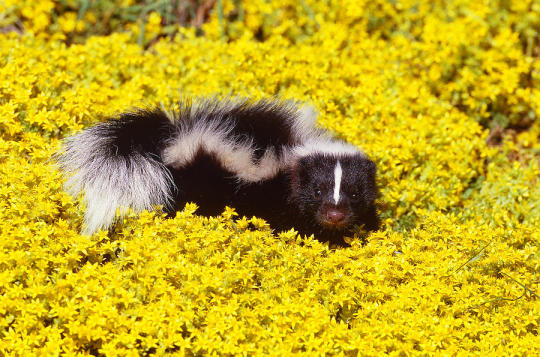

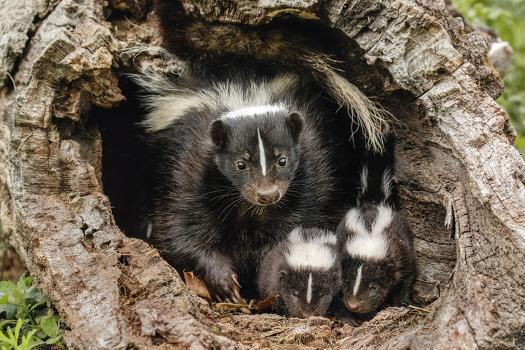
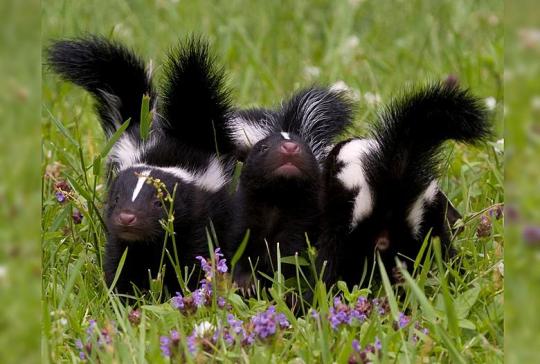
Mephitis mephitis better known as the striped skunk, seganku, scangaresse, sheegawk, common skunk, Alaska sable, mahcah, guli, Hudsonian skunk, nool'-tsee-a, northern skunk, black-tailed skunk, and prairie polecat, is a species of skunk which is endemic to the United States, southern Canada, and northern mexico. Striped skunks are found in a variety of habitats including grasslands, scrublands, deserts, montane areas, riverine woodlands, forests, and agriculture lands. For the most part they nocturnal lead solitary lives but will come together to socialize, particularly during the breeding season, and in winter multiple skunks may share a den to hibernate. They are largely insectivores feeding upon grasshoppers, beetles, crickets, caterpillars, worms, arachnids, grubs, centipedes, millipedes, and bees, but are also known to eat crayfish, crabs, fish, amphibians, small reptiles, carrion, apples, berries, cherries, corn, nightshade, young rabbits, white-footed mice, voles, eggs, and bird chicks. Like all skunks, they possess a pair of highly developed musk-filled scent glands which can spray a noxious liquid, known for its irritating foul stench, considerable distances. Because of this formidable defensive capability, the striped skunk has few natural predators, however they are known to occasionally be eaten by particularly hungery or determined coyotes, bobcats, wolverines, badgers, foxes, cougars, golden eagles, bald eagles, and great horned owls. Reaching around 18 to 32 inches (46.5 to 81.5cms) in length and 1.5 to 13lbs (.7 to 6.3kgs) in weight, striped skunks are a stoutly-built, short-limbed animal with a small, conical head and a long, heavily furred tail. The feet are plantigrade with bare soles, with the forefeet having five long, curved claws adapted for digging, while those on the hind feet are shorter and straighter. The color patterns of the fur vary greatly, but generally consist of a black base with a white stripe extending from the head which divides along the shoulders, continuing along the flanks to the rump and tail. Some specimens have a white patch on the chest, while others bear white stripes on the outer surface of the front limbs. Brown and cream colored individuals are also known to occur. The striped skunk is polygamous with the breeding season occurring from mid February to mid april. During this time a striped skunks genitals will grow considerably in size with males testicles swelling up to 4 times there usual size. They typically form harems with one male breeding with several females. After a 59 to 77 day pregnancy mothers will give birth to 2 to 18 kits, which open there eyes at around 3 weeks of age, are weaned by 6 to 7 weeks, and set off on there own at around 2.5 to 3 months old. Under ideal conditions a striped skunk may reach sexual maturity at 10 months old and live up to 10 years.
#pleistocene pride#pleistocene#pliestocene pride#pliestocene#cenozoic#ice age#stone age#skunk#striped skunk
5 notes
·
View notes
Text

Hudsonian Godwit. Fuertes…another early one.
art by louis agassiz fuertes
text by barry kent mackay
support barry kent mackay on ko-fi
12 notes
·
View notes
Text
this racist story (Phalanxes of Atlans, which I'm editing but attempting to not read yet) has introduced a new version of swarthy -- swart. used in "these swart warriors".
it means dark skinned, or at least having skin noticeably dark enough to be dictintly Not White And Therefore Hated by the Racist Author.
Here's a contextless section of the text I read by accident if you want an example of the type of racism rampant in these short stories.
Francis Van Wyck Mason wrote this story. Lucky for the world he died in 1978.
With sharp anxiety, Victor Nelson kept watching the towers of Jezreel rise ever clearer above the great, warm plain of Jarmuth, but, for all that, he noted how distinctly Jezreel differed from Heliopolis. The Jarmuthian capital was predominantly amber-yellow instead of white in color; its towers were flat-topped, angular, hideous structures that compared not at all favorably with the graceful Grecian architecture of Atlantean public buildings.
The populace, he decided, as he strode along in the midst of half a dozen silent guards, were as harsh and graceless as their architecture. Whereas the Atlanteans had been white skinned and uniformly red haired—save for those of Hudsonian blood—the inhabitants of Jarmuth almost without exception were black haired and had dark, olive-hued skins.
"They're the lost tribes of Israel, all right," Nelson decided after a brief sojourn in that savage land lying beyond Apidanus—the great boiling river, whose bubbling and scalding currents had for centuries served as a natural boundary between the two realms. But now the Jarmuthian armies had crossed it and were steadily pushing back the demoralized and despairing Atlanteans with savage energy that heaped the dead in hillocks.
"Their armor," mused the ragged, barefoot prisoner, studying his silent guards, "looks a lot like a Roman legionnaire's, but that six pointed star on their helmets is pure Semitic. Yes, this sure is an Asiatic outfit."
His eyes wandered from one fierce, big-nosed infantryman to another and noted the splendid physical structure of the majority. Evidently hardier, much less refined and luxury-loving than the Atlanteans, these swart warriors disdained robes and other garments. Save for helmet, armor and brief black kilts, they were quite naked.
1 note
·
View note
Text


0 notes
Text







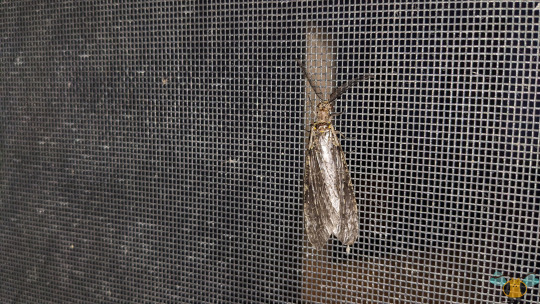


Spring Fishfly - Chauliodes rastricornis
The lakes and forests of cottage country always have so many surprises when it comes to insects. I thought the Hudsonian Whiteface Dragonfly was going to be the highlight, but then I saw this large-winged individual trying to phase his way through a screen door to get inside. When I first saw the wingspan and flight pattern, I expected to see a giant Moth, so imagine my surprise to see an elusive Fishfly! He sure does fly like a Moth, and even rests like one with the wings folded backward and was drawn by the porchlights. He was definitely the highlight of the evening and greatly dwarfed all other nearby insects! While an insect like this appears intimidating, rest assured that he is perfectly harmless and can be handled with care. According to Bugguide and other identification sources, this specimen is more likely to be a Spring Fishfly rather than a Summer Fishfly (C. pectinicornis), but not just because he was found flying in May instead of July. Given habitat ranges and differing timeframes of adult emergence from the water, seasonality cannot be the sole factor for identification. Apparently, the best way to distinguish between the 2 species are to examine the two parallel markings on the back of the insect's head, just behind their ocelli.
As can be seen from Pictures 5 and 7, our Spring Fishfly friend has dark-colored head markings contrasting with its lighter shell. The Summer Fishfly's head markings and body are the reverse of that (bright markings, darker shell). This identification however, doesn't take into account other species of Fishfly that may call lakes home, so examine your Megalopteran carefully. As if net-veined wings and yellow highlights along the head's mouthparts, thorax and wing-bases weren't enough of an allure for the camera, there are the elongated and feathered antennae to admire. There's no doubt that these antennae used to locate the enticing pheromones of females (also similar to the function of feathered Moth antennae). The feathering designated this individual as a male; a female Fishfly would have had serrated antennae with saw-like grooves. At a passing glance, with their slight curvature they resemble grand mandibles! However, that style of antenna (pectinate) my only occur for this genus; other genera may have other types. For example, Neohermes Fishflies have antennae that resemble balls on a string (moniliform). Mileage may vary, but if you're looking to try and find some Fishflies, approach the water in spring (or summer) and see what insects come to the light. Have some bug repellent or patches handy to keep the Mosquitoes away, as adult Caddisflies aren't going to eat them.
Pictures were taken on May 27, 2024 in Muskoka with a Google Pixel 4. The instances of white ocelli seen in the images here are due to the camera's flash.
#jonny’s insect catalogue#ontario insect#fishfly#spring fishfly#megaloptera#insect#muskoka#may2024#2024#entomology#nature#invertebrates#arthropods
32 notes
·
View notes
Text
i'm sorry i can't be at the swakop river mouth looking at the rare vagrant hudsonian godwit
1 note
·
View note
Text
Snowshoes in the desert

Southern Arizona encompasses part of the basin and range region. This huge swath of topography nearly defines the American southwest, stretching north to the Colorado and Columbia Plateaus and west to the Sierra Nevadas. It continues east through southern New Mexico as far as the Rio Grande’s Big Bend. The defining feature are broad flat basins interspersed with abrupt jutting mountains. It would take a geologist to explain the underlying tectonic plate mechanics. So I won’t attempt it here. I just want to say that it is this topography that produces the Sonoran Desert’s “sky islands.”
The sky islands are just what they sound like. The abrupt mountains produce huge elevation changes. These changes alter rainfall and temperature enough to create a staggering diversity of life zones. A drive up Tucson’s Mt. Lemmon highway** into the Santa Catalina Mountains takes you from from an arboreal desert all the way to the Hudsonian zone, with small alpine pockets near the very top.
One of my favorite sky islands is the Santa Rita range about 30 miles south. While you can drive up Mt. Lemmon, getting to the peak of the Santa Rita’s 9400’ Old Baldy is done on foot. The reward for your trudge, hike, or climb—depending on your bent—are views that, on a clear day, let you see other mountain peaks nearly 100 miles distant.
Yesterday I trekked up Old Baldy for a completely different reason: I wanted to snowshoe. Okay, you’re right. No one really wants to snowshoe. What we want to do is play in the snow. And if that snow is more than calf deep snowshoeing keeps us from lurching around like schizophrenics. My idea was that our incredibly wet winter, coupled with a snowfall just days ago that brought frozen rain down to 2000’, would be enough to ensure an opportunity. And looking at the north face of Baldy from Tucson it all seemed a good bet.
So I borrowed a pair of snowshoes from a friend who volunteers for search and rescue and headed out.
My arrival at Josephine Saddle via the Super Trail didn’t portend a good outcome. I had donned my micro spikes once for any icy stretch maybe fifty yards long. But I was hiking in my shirtsleeves and there was a scant, and patchy, two inches of snow. Undaunted, I continued on the Super Trail around the mountain’s southwest flank.
For sure it is counterintuitive to go the the hotter drier side when there is clearly snow on the cool, shadowy north route. But the Old Baldy trail up the north face has its problems. One is that it ascends 2700’ in just 2 1/2 miles. The other is that everybody and his cousin uses Old Baldy. The trail would not have loose snow. The snow would be packed, in many places nearly to ice.
My idea was that with all the snow that had fallen, it could not possibly have melted off even on the warmer side of the mountain. And, since fewer people use that route, any snow was less likely to be packed. I was definitely right about it not being packed. In the shade, before the trail turned west, very few tracks went ahead of mine. And I was right about the melt off. What I forgot about was evaporation. Huge amounts of snow don’t melt. It evaporates. That’s what had happened. And with it my dream of snowshoeing evaporated as well.
I trudged upward anyway. It was a great day to be in the Santa Rita’s. And it was an excellent day to be on the Super Trail. At the 8700’ level on a cooler face I finally encountered knee-deep snow. I strapped on the snowshoes. But the smooth steady ascent of Super Trail also changed at that point. It climbed more steeply. And also intersected a precipitous slope. If it was a good place to snowshoe, it was a bad place to learn to snowshoe. I swished along for about a quarter mile before deciding to turn around and enjoy the hike down.
The photo above shows the frustration. The trail is clear and dry. Everywhere else is calf-deep, knee-deep, hip-deep snow. But it was hard to be annoyed. The cool snowy mountains were beautiful. The Super Trail was as empty as I’d hope it to be. I got in a 14-mile hike. And I did get to snowshoe even if was just a tiny bit. All in all, a pretty good day.
**You may also see it referred to on maps as Catalina Highway, or hear people call it by its actual name the Hitchcock Highway.
1 note
·
View note
Text
Hudsonia Today
28 people are dead the many more feared missing in western New York State today, due to a massive snowstorm that has North America's Eastern Seaboard.
In the state's capital, Buffalo, a local government spokesperson said that the Hudsonian National Guard are being brought in to assist local police in managing traffic in the city amid a driving ban.
While the largest death toll has been reported in New York, storm-related deaths have been reported across the US, including Vermont, Ohio, Missouri, Wisconsin, Kansas, and Colorado.
New York has the highest death toll, though deaths are being reported across the northeast, including Ontario, Quebec, Ohio, Wisconsin, the New England state of Vermont, The Plainsian states of Kansas and Missouri and the Rocosan state of Colorado.
0 notes
Link


Excerpt from this story from the Smithsonian:
Long-distance migration is the most extreme and life-threatening thing that any animal does. And migratory shorebirds make the most miraculous journeys of all, given the distances they cover and their tiny size. There are some 70 species of shorebirds in the world that make the journey from the top of the globe to the bottom and back every year.
The Hudsonian godwit is one of them. Named after the Canadian bay where the species was first identified, and the bird’s distinctive two-syllable cry (“god-wiiit!”), Hudsonian godwits lay their eggs each spring in this Alaskan bog. (All godwits breed in the Northern Hemisphere.) In June or July, they leave their self-sufficient hatchlings and head south. First, they fly for three days to the wetlands of Saskatchewan and feed for one month. Then they continue down through the Americas to the northern Amazon—a 4,000-mile trip. They feed again and a week later head to Argentina, feeding another time before continuing over the Andes to Chiloé Island, on the fecund Gulf of Ancud, where they arrive in September or October and winter for a little over six months.
The longest leg of their journey, some 6,000 miles, is on the return from Chile. They fly night and day at speeds between 29 and 50 miles per hour, not stopping to eat, drink or rest. They pause for a couple of weeks to refuel in wetlands in the central United States—usually Nebraska, South Dakota, Kansas or Oklahoma—and then continue back to the Alaskan bog. Their goal is an endless summer.
In person, the Hudsonian godwit is prepossessing, sleek and reddish brown and gold in its Alaskan spring breeding colors, with slender stiltlike legs and a very long, upturned bill specially designed for feeding in mud. If you are a researcher trying to capture and study baby Hudsonian godwits, you’ll look for a well-camouflaged, soup-cup-size nest on the ground. Once you find it, you’ll get close enough to the mother bird to scare her into flight.
24 notes
·
View notes